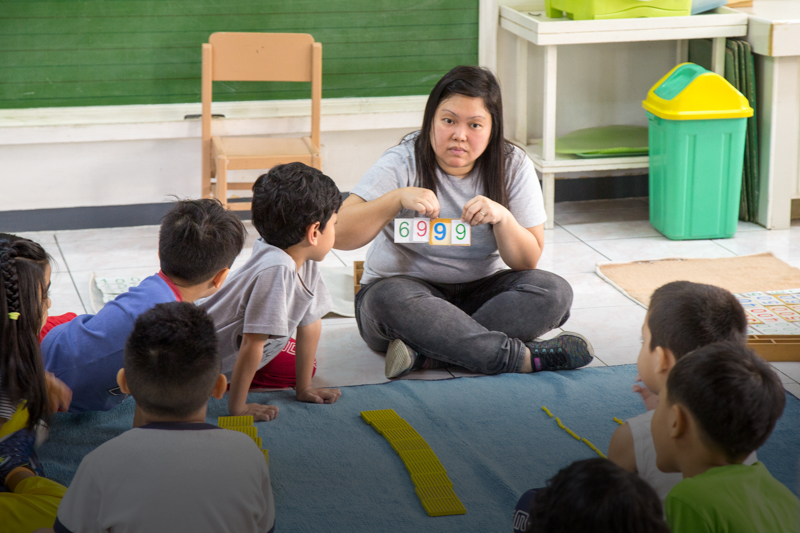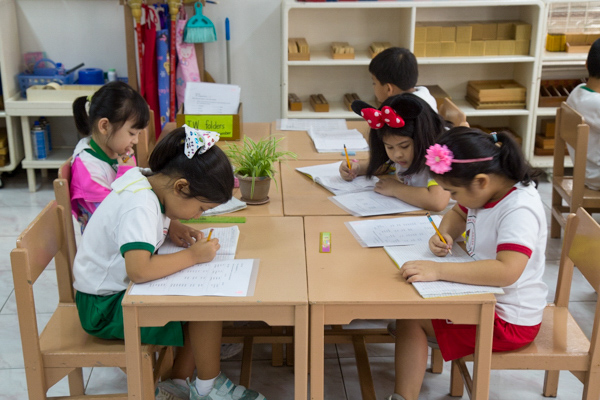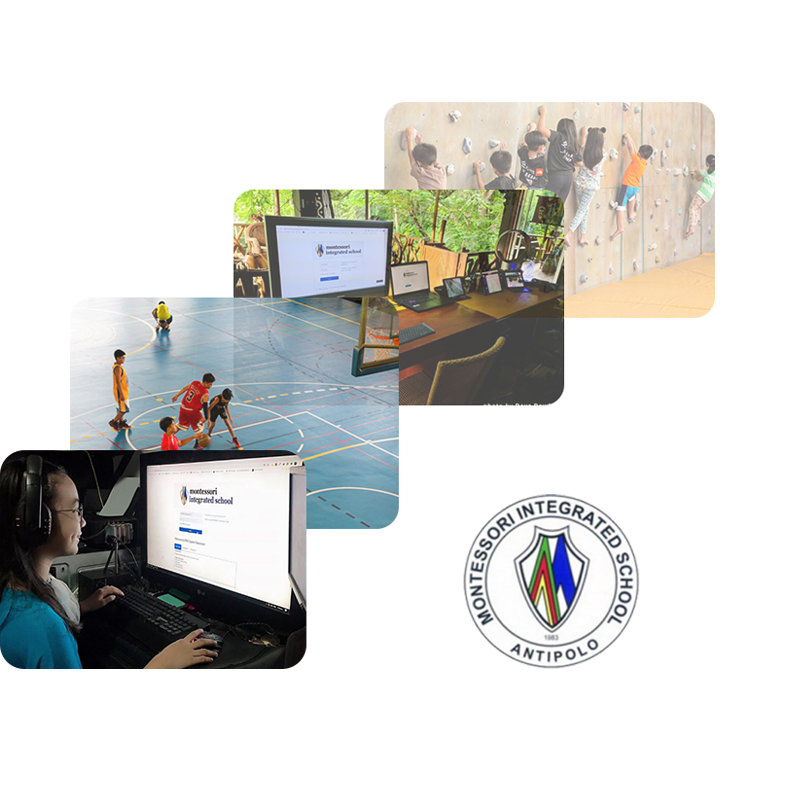THE CHILDREN'S HOUSE
Preschool and Kinder
Our Pre-School and Kinder pupils are taught under one roof, which we call “The Children’s House”. The Pre-school level is for children ages 2.5 to 4.5 years old. Classes run for 3 hours daily. The focus of the preschool level is socialization, sensorial activities, practical life skills, the refinement of language, and the learning of basic letter sounds, blending and reading of simple words, and math concepts. The Kinder level is for children aged 5 years old. Classes are whole day thrice a week, and three hours twice a week. This level tackles higher-level academic work, focusing on math and language, in preparation for Grade 1.
The preschool and kinder pupils are taught together in mixed-level classrooms known as the Montessori Children’s House (MCH). Children aged 2.5 to 4.5 years are considered preschoolers, and their class activities focus on socialization, sensorial activities, practical life skills, the refinement of language, the learning of basic letter sounds, blending and reading of simple words, and math concepts. The Kinder level is for children aged 5 years old. At this level, more complex math and language skills are tackled to help prepare children for Grade One. Kinder learners are also introduced to formal group tests where reading, writing and math skills are applied in preparation for academic instruction.
Classroom work activities are supplemented by circle time, music and movement, ICT time, and physical education. From time to time, children experience special activities such as cooking and sandwich making to encourage self-help and independence.
MCH classes last 3 hours a day, 4 days a week.

Based on the Montessori principle of the “absorbent mind”, the teachers assist the interaction between the child and the environment through carefully chosen and personalized activities. This interaction includes socializing with other 2.5- to 6- year old children in the Children’s House, and learning concepts like SENSORIAL ideas, COORDINATED MOVEMENT, LANGUAGE, MATH, and PRACTICAL LIFE.
Sensorial activities allow the child the opportunity to refine each of their senses (visual, tactile, olfactory, auditory and kinesthetic) through the manipulation of concrete materials such as the Broad Stairs, Red Rods and Pink Tower
Math concepts are presented to the child through materials like the number rods, sandpaper numbers, spindle box and the Golden Beads. Each activity builds on the previous one until the child gradually moves from concrete handling to abstract ideas such as place value, addition, subtraction, multiplication, division and fractions.
Language is based on phonetic awareness. Children learn using specific tactile language materials like the sandpaper letters and movable alphabet. The class routine also includes many opportunities to practice spoken language through songs, poems, rehearsed talk, and role play. This is important, because spoken language sets the foundation for subsequent reading and writing activities.


Practical life tackles skills to help develop self-reliance, concentration, coordination, self-control, self-awareness and confidence. Learning is done through activities like self-help (learning to put on one’s clothes) studying grace and courtesy (taking turns, saying Please and Thank You), control of movement (tiptoeing, galloping, running, keeping silent), and care of environment (watering plants, sweeping, dusting, etc.).
Finally, language extensions involve the study of the natural world around the child and includes the study of Geography, Zoology, Botany, History and Science. This normally takes place during group lessons, when children are presented with monthly themes ranging from Self, to Community Helpers, Transportation, Animals, Plants and the Solar System. After each theme, an exciting culminating activity involving all classes helps children remember what was learned.

